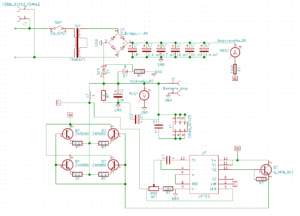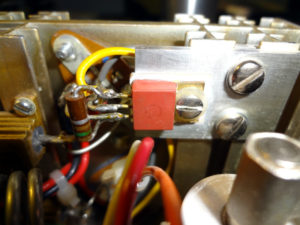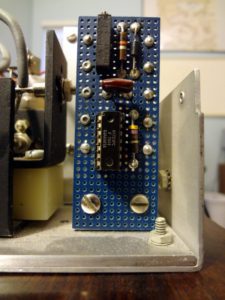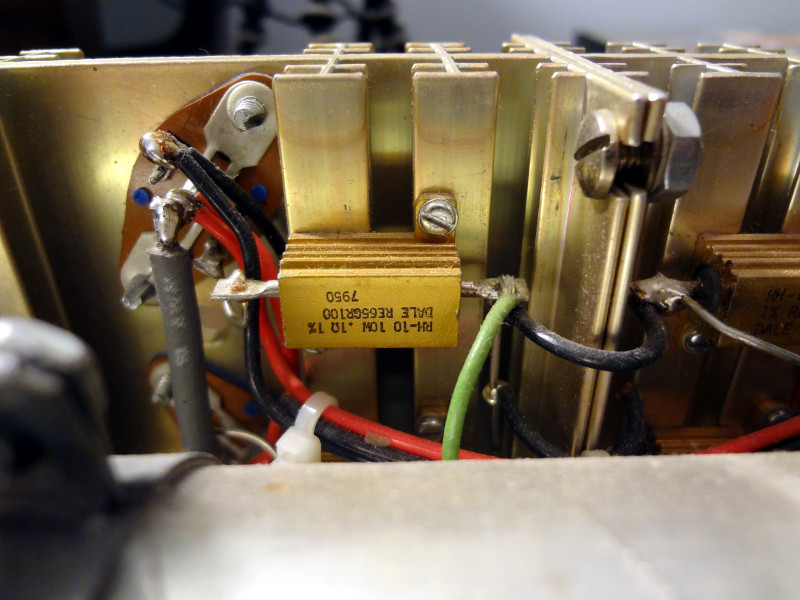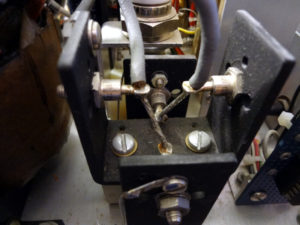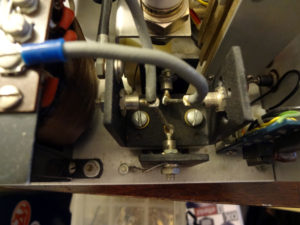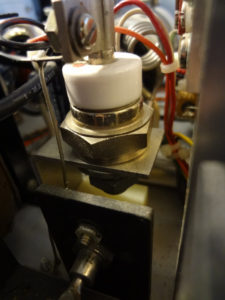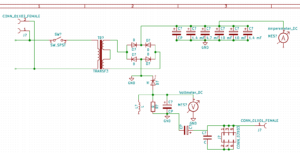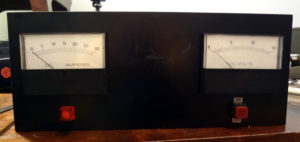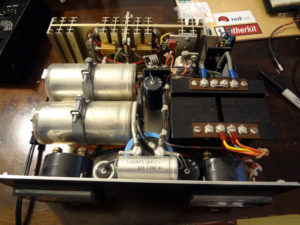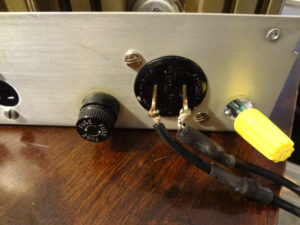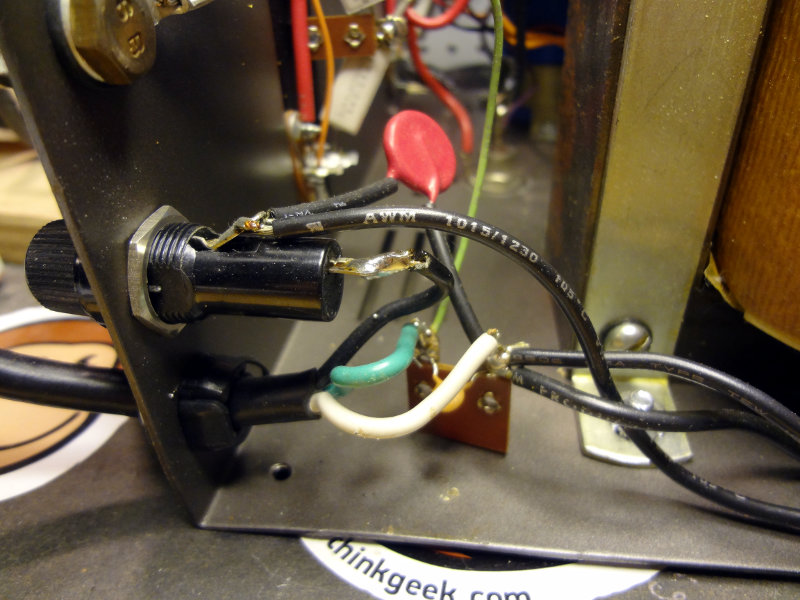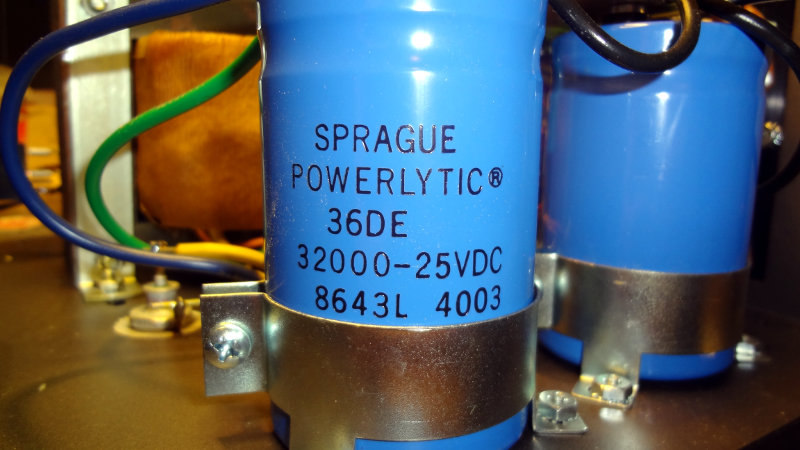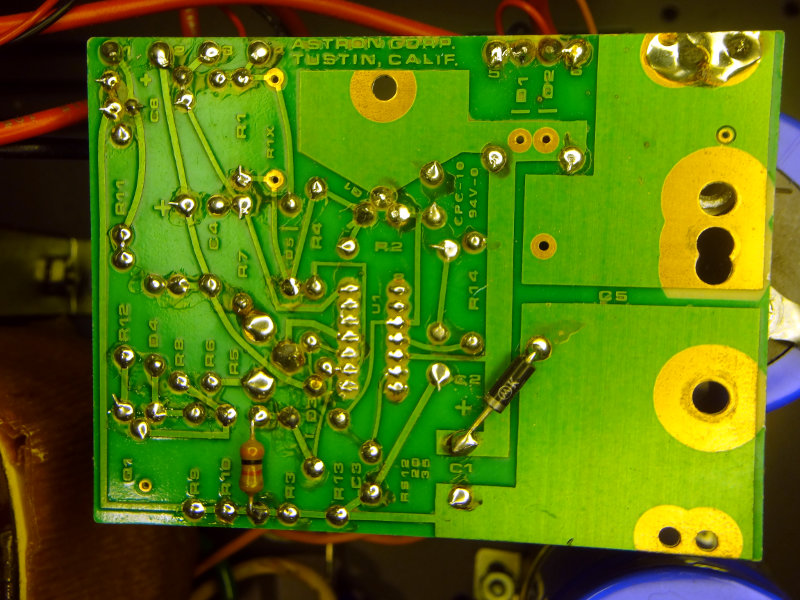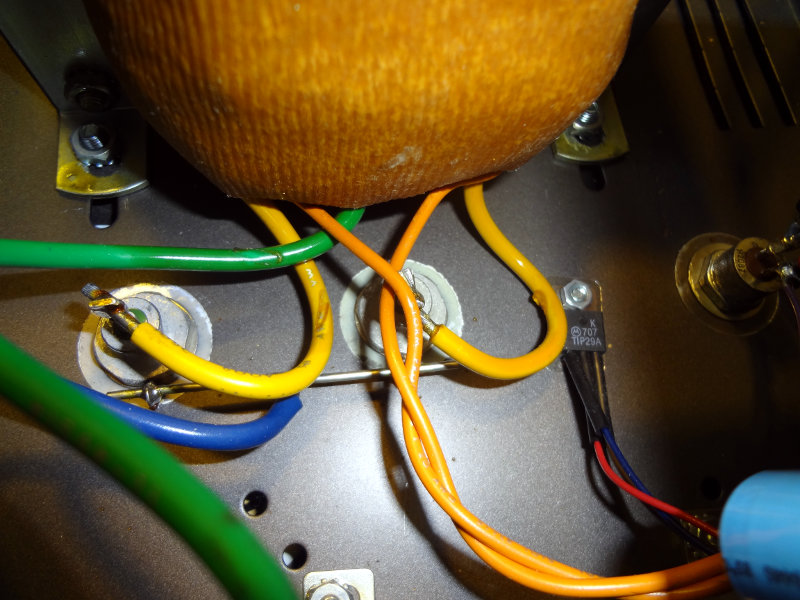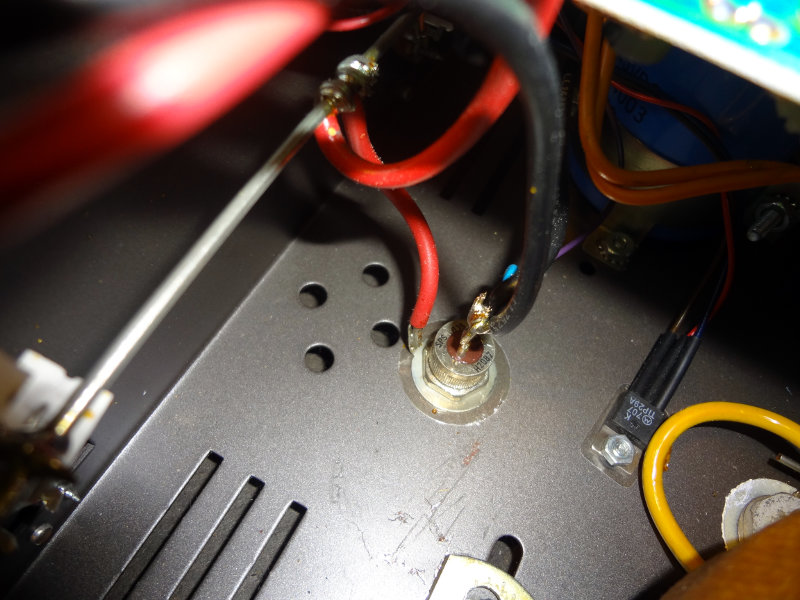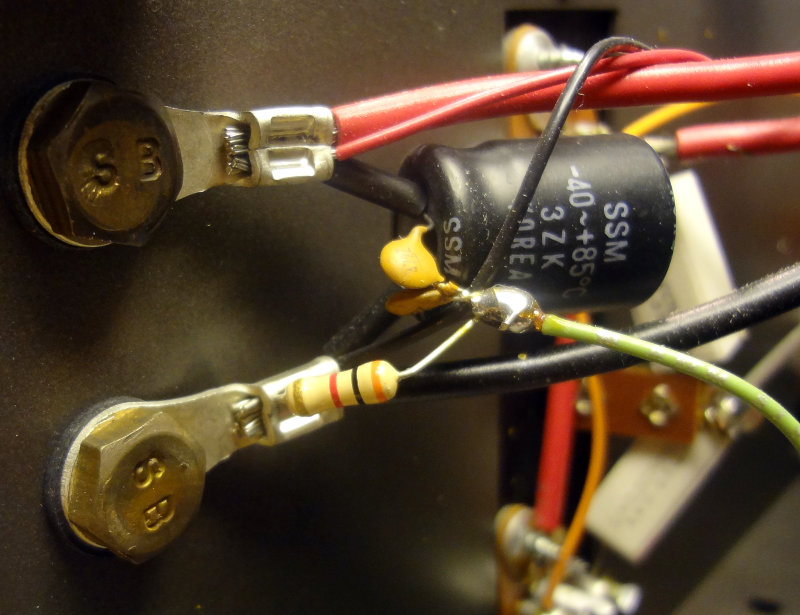I’ve finished tracing the power supply schematic out to the control board. I’ll go through it once or twice more to make sure I’ve got everything right, but I think I’ve got a fairly complete schematic of the power supply now.
Here’s the schematic so far.
I did run into an anonymous transistor type part with a red case that I wasn’t able to identify. Whatever markings were on it have been rubbed off, so there’s no way to really identify it anymore.
The base of the transistor (I’m assuming it’s the base anyway) is connected to pin 10 of the 723 voltage regulator while the emitter is connected to the bases of the power transistors. The collector goes to pin 12 of the 723 and the collectors of the power transistors. Checking with schematics for my Astron RS-35, there’s a TIP29 transistor in roughly the same spot, so I’m reasonably confident this mystery part is an NPN transistor of some kind.
Tracing out the control board was a bit tricky, but I think I managed to get it right (I think I’m missing the diode on the schematic though). I’ll need to recheck where the wires coming off the control board go in the rest of the power supply.
Quite impressed with the way this power supply was put together. Everything is soldered or screwed together nice and cleanly, and the wires are nicely dressed and bundled together with zip ties and string.

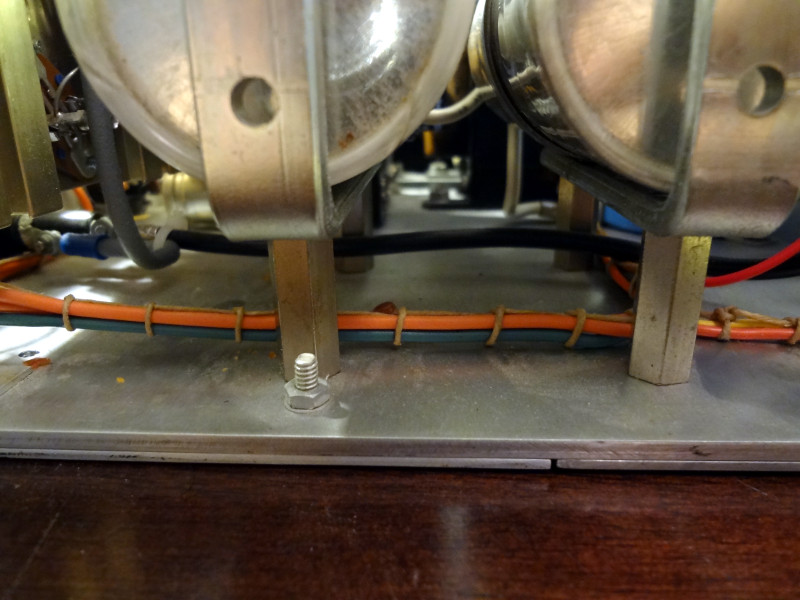


Except for the blown fuse, I don’t see anything obviously wrong with the power supply. I think I will look into replacing that AC input plug though before I try applying power to this thing.
